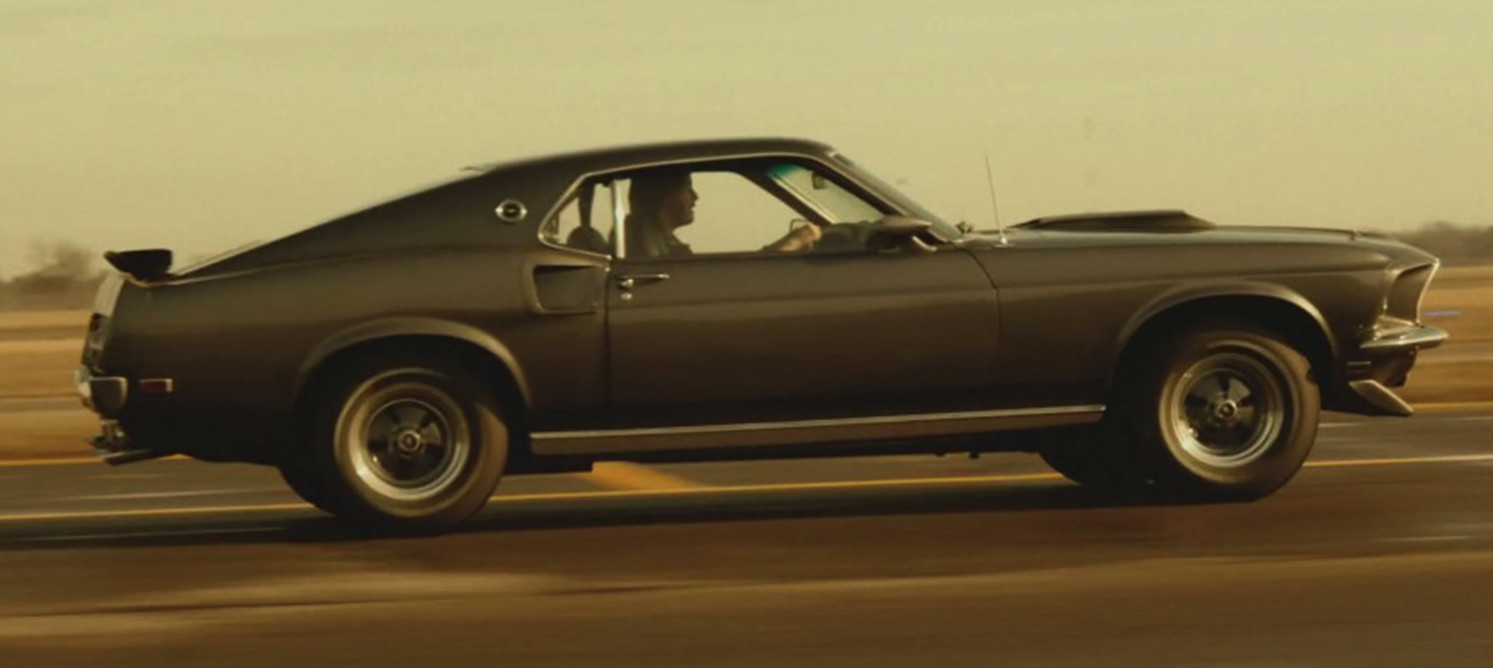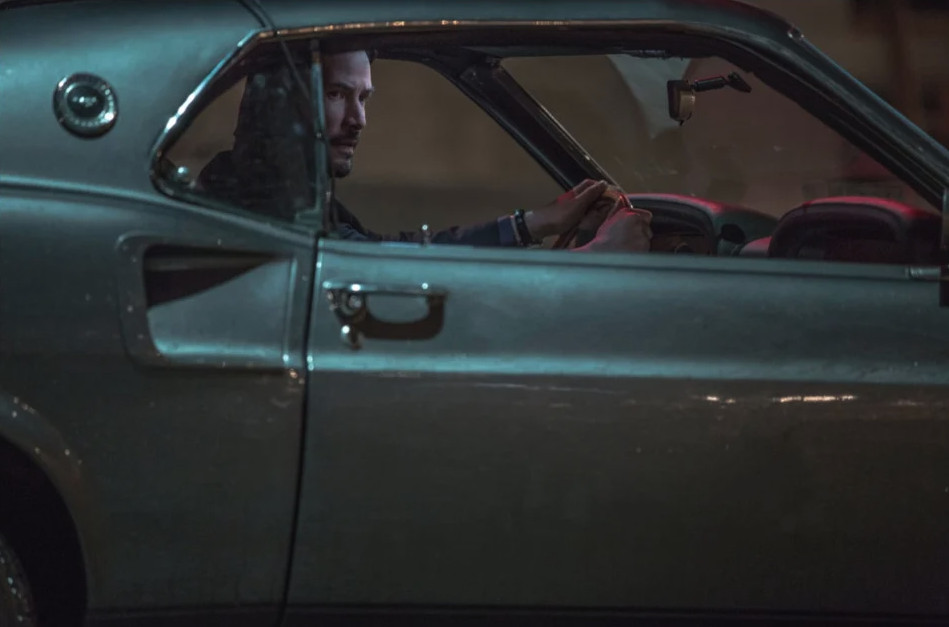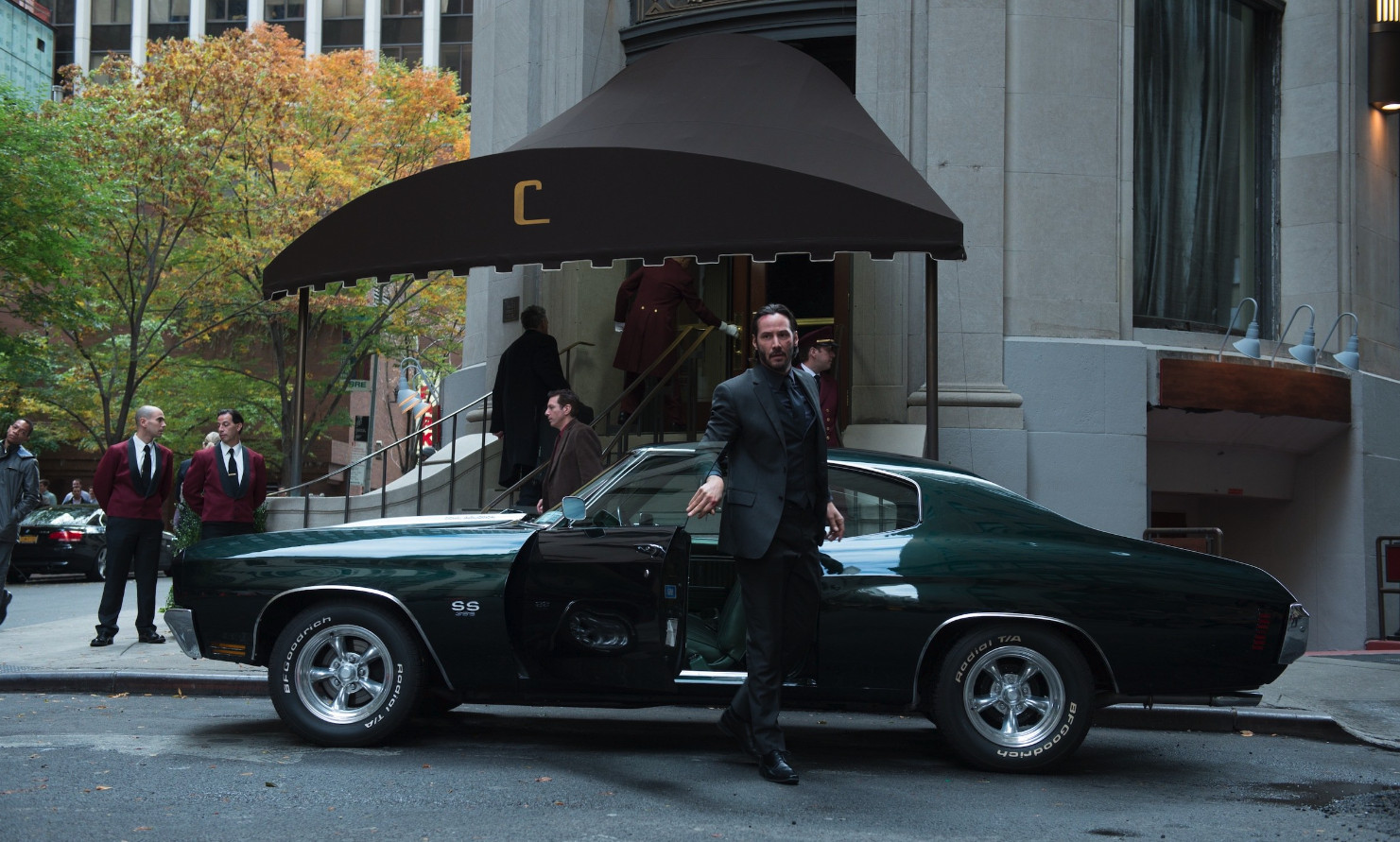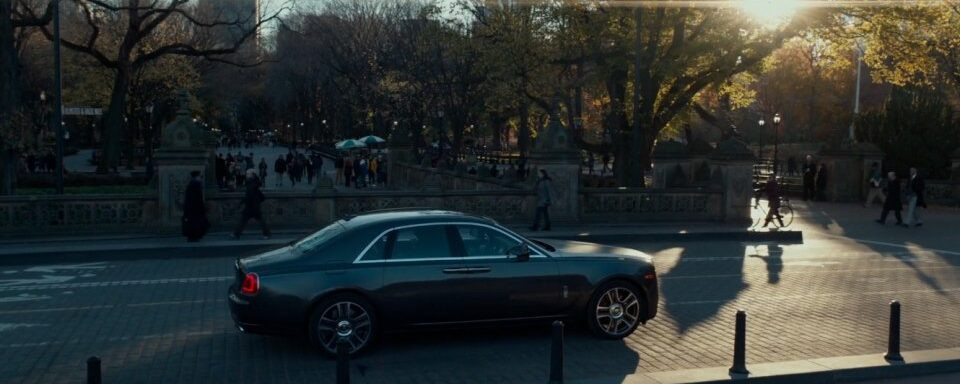John Wick, the modern action movie icon portrayed by Keanu Reeves, isn’t just known for his lethal skills and stylish suits; he also boasts an impressive collection of cars. From classic American muscle to sophisticated luxury, John Wick’s vehicles are as integral to his persona as his Baba Yaga moniker. This article delves into the notable cars featured throughout the John Wick franchise, exploring why these particular vehicles fit the character and add another layer of cool to this action-packed world.
The Iconic 1969 Ford Mustang Boss 429
 John Wick driving his iconic 1969 Ford Mustang Boss 429 in an action scene from the first John Wick movie.
John Wick driving his iconic 1969 Ford Mustang Boss 429 in an action scene from the first John Wick movie.
The 1969 Ford Mustang Boss 429 is arguably the most famous car in the John Wick series, and it all starts with this beauty in the original 2014 film. The encounter at the gas station with Iosef Tarasov, played by Alfie Allen, sets the entire plot in motion. Tarasov, blinded by arrogance and the allure of the Mustang, attempts to bully Wick into selling his prized possession. While automotive experts might notice slight inaccuracies in the movie car’s details, for cinematic purposes, it convincingly represents the legendary Boss 429.
Tarasov’s fateful decision to steal the Mustang after failing to purchase it ignites Wick’s fury, unleashing the Baba Yaga upon the criminal underworld. In reality, a genuine 1969 Boss 429 is exceptionally rare, with only 857 units produced in its first year. These Mustangs were built to homologate Ford’s powerful 7.0-liter NASCAR engine, making them highly sought-after muscle cars. Officially rated at 375 horsepower, many believe these engines were significantly underrated, embodying the raw power and understated menace that mirrors John Wick himself.
 Close-up of the stolen 1969 Ford Mustang Boss 429, a key element in the plot of the first John Wick movie.
Close-up of the stolen 1969 Ford Mustang Boss 429, a key element in the plot of the first John Wick movie.
The Sinister 1970 Chevrolet Chevelle SS 396
 John Wick standing next to a dark green 1970 Chevrolet Chevelle SS 396 at a garage, his replacement car after the Mustang was stolen.
John Wick standing next to a dark green 1970 Chevrolet Chevelle SS 396 at a garage, his replacement car after the Mustang was stolen.
When Wick needs a replacement vehicle, he doesn’t just settle for anything. Visiting a friend’s performance shop, amidst glimpses of automotive gems like a Porsche 993 GT2 and a Ford GT40, John Wick picks up a 1970 Chevrolet Chevelle SS 396. This Chevelle, painted in a custom, darker shade of green than the factory Forest Green, exudes a sinister vibe that fits Wick’s persona.
Although the Chevelle SS 396 has limited screen time in the first movie, it makes a memorable impact. Its menacing presence rumbling through Manhattan streets leaves a lasting impression. True to the franchise’s nature, no car is safe. The Chevelle meets its demise in the opening sequence of Chapter 2, becoming a battering ram in Wick’s relentless quest to retrieve his Mustang, showcasing its brief but impactful role as a powerful and expendable tool.
 Front view of the 1970 Chevrolet Chevelle SS 396 in the John Wick movie, highlighting its aggressive styling.
Front view of the 1970 Chevrolet Chevelle SS 396 in the John Wick movie, highlighting its aggressive styling.
The Luxurious Rolls-Royce Ghost Series II
 John Wick inside the opulent interior of a Rolls-Royce Ghost Series II, a symbol of luxury and sophistication in Chapter 2.
John Wick inside the opulent interior of a Rolls-Royce Ghost Series II, a symbol of luxury and sophistication in Chapter 2.
After the mayhem and destruction of classic muscle cars, John Wick takes a temporary detour into luxury in Chapter 2. For a portion of the film, he trades high-speed chases for public transportation and pedestrian travel. However, in a fittingly stylish return to four wheels, Wick is seen in the back of a Rolls-Royce Ghost Series II.
While a modern Rolls-Royce might not immediately scream “John Wick,” it’s arguably the perfect ride for the Baba Yaga when he needs to maintain a low profile with a touch of class. The Ghost represents sophistication and understated power, much like Wick himself when he’s not engaged in боевик. It’s a vehicle that speaks volumes without shouting, aligning with Wick’s reserved yet formidable nature.
The Rugged 1995 Range Rover LP
 John Wick and Sofia (Halle Berry) escaping in a first-generation Range Rover in a desert scene from John Wick: Chapter 3 – Parabellum.
John Wick and Sofia (Halle Berry) escaping in a first-generation Range Rover in a desert scene from John Wick: Chapter 3 – Parabellum.
John Wick: Chapter 3 – Parabellum is arguably less car-centric than other installments, but it still features a notable vehicle: a 1995 Range Rover LP. This second-generation Range Rover becomes the escape vehicle for Wick and Sofia (Halle Berry), along with her impressive canine companions, as they navigate a desert landscape.
While not a flashy muscle car, the Range Rover adds a different dimension to Wick’s automotive choices. It represents practicality and ruggedness, suggesting that Wick’s taste extends beyond pure aesthetics to vehicles capable of handling diverse environments. Although these Range Rovers are becoming collectible, the movie version appears to be more of a well-used “driver,” further emphasizing its functional role in the film’s narrative.
The Menacing 1971 Plymouth Cuda
 John Wick aggressively driving a black 1971 Plymouth Cuda in a nighttime action sequence from John Wick: Chapter 4.
John Wick aggressively driving a black 1971 Plymouth Cuda in a nighttime action sequence from John Wick: Chapter 4.
Baba Yaga makes a triumphant return to classic American muscle in Chapter 4 behind the wheel of a 1971 Plymouth Cuda. This menacing black Cuda is put through the wringer in typical John Wick fashion, enduring intense action sequences. The nighttime setting of the Cuda’s prominent scene keeps the exact engine specification somewhat hidden, but given Wick’s resources and penchant for powerful cars, it’s highly speculated to be equipped with either the 440 Six Pack or the legendary Hemi engine.
The 1971 Plymouth Cuda is another iconic muscle car, and its inclusion in Chapter 4 reinforces Wick’s appreciation for raw power and classic American automotive design. Its appearance signals a return to form for Wick, both in his choice of vehicle and his relentless fighting style.
Conclusion: John Wick’s Automotive Persona
Across four films, John Wick has curated a car collection that is as diverse and compelling as the character himself. From the muscle of the Mustang and Chevelle to the luxury of the Rolls-Royce and the ruggedness of the Range Rover, each vehicle choice reflects a different facet of Wick’s personality and the demands of his dangerous life. His preference for classic American muscle, in particular, speaks to a timeless sense of style and a love for raw, unadulterated power. As the John Wick saga continues, audiences eagerly anticipate not only the breathtaking action but also the next impressive addition to Baba Yaga’s killer car collection.
